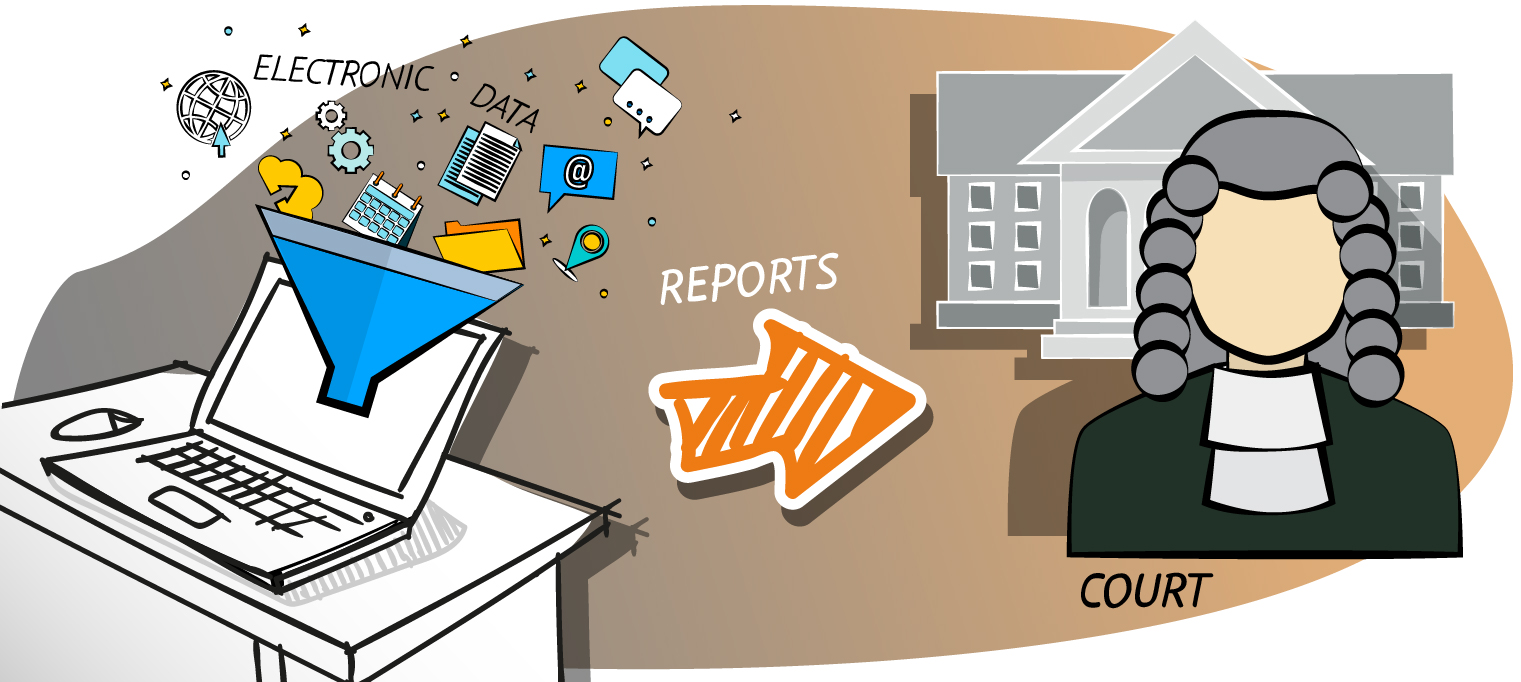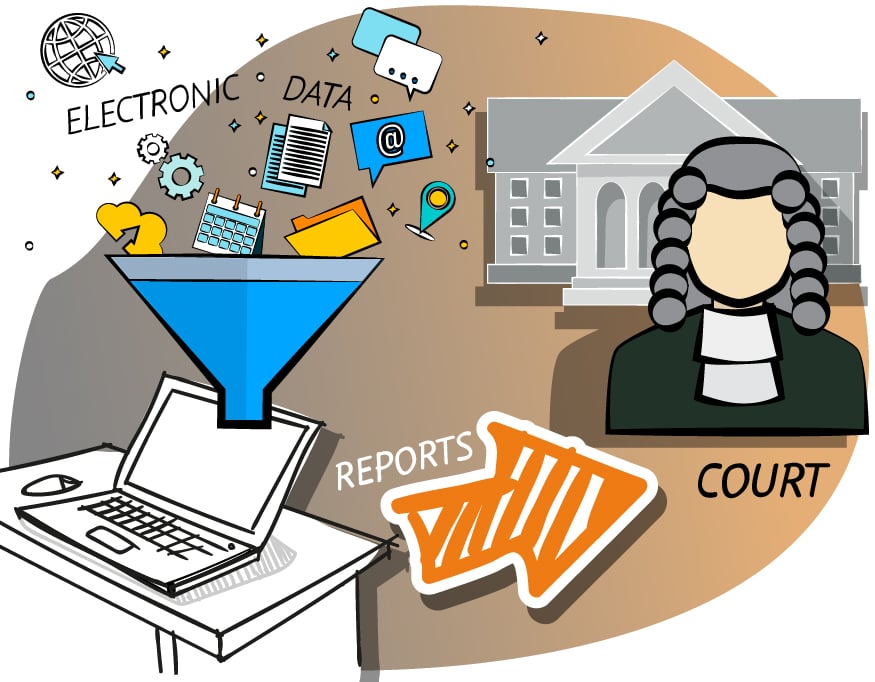Forensic Technology in the Digital World
When most people hear the word “forensics”, what usually comes to peoples’ minds right away is that it will involve somebody in a lab and a white coat working long hours. In this case it takes place in companies’ office hardware. Digital forensics is the collection, analysis, and reporting of various types of electronic data that can be preserved in the necessary way so that it can be presented in a court of law. Data forensics is a branch of digital forensics. Its purpose is to examine structured data with regard to incidents of financial crime. The aim is to discover and analyze patterns of fraudulent activity. Structured data are data from application systems or their underlying databases as opposed to unstructured data which are taken from communication and office applications or mobile devices without any overarching structure, requiring keywords or mapped communication patterns for analysis.


Digital Forensics Corporate Organization
Computer systems networks and mobile devices can all be subject to an attack or be exploited in one, each with its own vulnerabilities and intrusion routes. Forensic software can use a disk image or virtual drives can be used as forensic tools to emulate an entire machine. Network forensics focuses on monitoring and analyzing computer network traffic. Mobile devices come with their own challenges partly due to memory volatility because phones can lose data after being turned off, rendering information preservation and tampering prevention crucial. For this reason, companies should have stringent procedures in the event that crime is committed. Without digital forensic case management software, companies will remain vulnerable to even worse attacks in the future and evidence may go unnoticed or destroyed.
IMPROVE DATA AT REST AND DATA IN USE TRANSPARENCY
Forensic Hardware and Software Tools
As challenges continue to mount in the field of cyber security, an ever more innovative forensic toolkit is required to keep up with the attacks. Hardware designed for this purpose includes forensic workstations, imaging devices, write blockers, data storage solutions, and cloning devices. Digital forensics software includes various evidence formats, event timelines from the system logs, recycle bin examination, etc. It is very helpful to know what data certain files in your system were created and edited, especially files containing sensitive information. Forensic audit software may include an incident response scenario to gather contextual information, such as a process list, scheduled tasks, and special signatures to check your host for malware and report back in the event of any signs of compromise. If the software does detect malware, the IT forensics will show you the medium that was used to breach your data or bypass your security so you can safeguard yourself from this in the future. Other digital forensics tools are designed for special purposes, for instance the extraction of digital artefacts from volatile memory dumps, open network sockets and network connections, and process IDs. It is also handy to be able to write and edit file metadata information. That way you can also analyze the static properties of suspicious files in a forensic investigation being conducted at the host’s location.
SearchInform uses four types of cookies as described below. You can decide which categories of cookies you wish to accept to improve your experience on our website. To learn more about the cookies we use on our site, please read our Cookie Policy.
Necessary Cookies
Always active. These cookies are essential to our website working effectively.
Cookies does not collect personal information. You can disable the cookie files
record
on the Internet Settings tab in your browser.
Functional Cookies
These cookies allow SearchInform to provide enhanced functionality and personalization, such as remembering the language you choose to interact with the website.
Performance Cookies
These cookies enable SearchInform to understand what information is the most valuable to you, so we can improve our services and website.
Third-party Cookies
These cookies are created by other resources to allow our website to embed content from other websites, for example, images, ads, and text.
Please enable Functional Cookies
You have disabled the Functional Cookies.
To complete the form and get in touch with us, you need to enable Functional Cookies.
Otherwise the form cannot be sent to us.

Subscribe to our newsletter and receive a bright and useful tutorial Explaining Information Security in 4 steps!

Subscribe to our newsletter and receive case studies in comics!